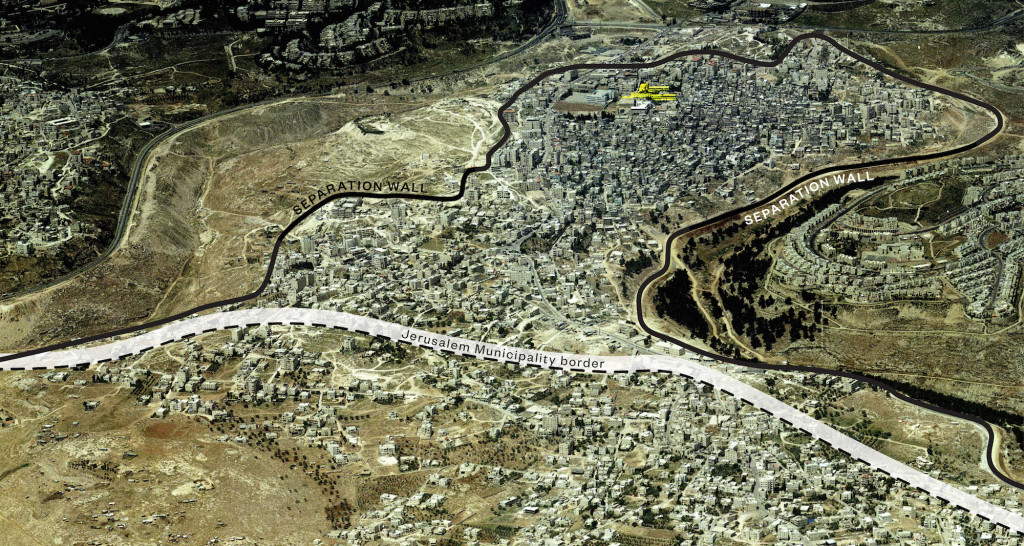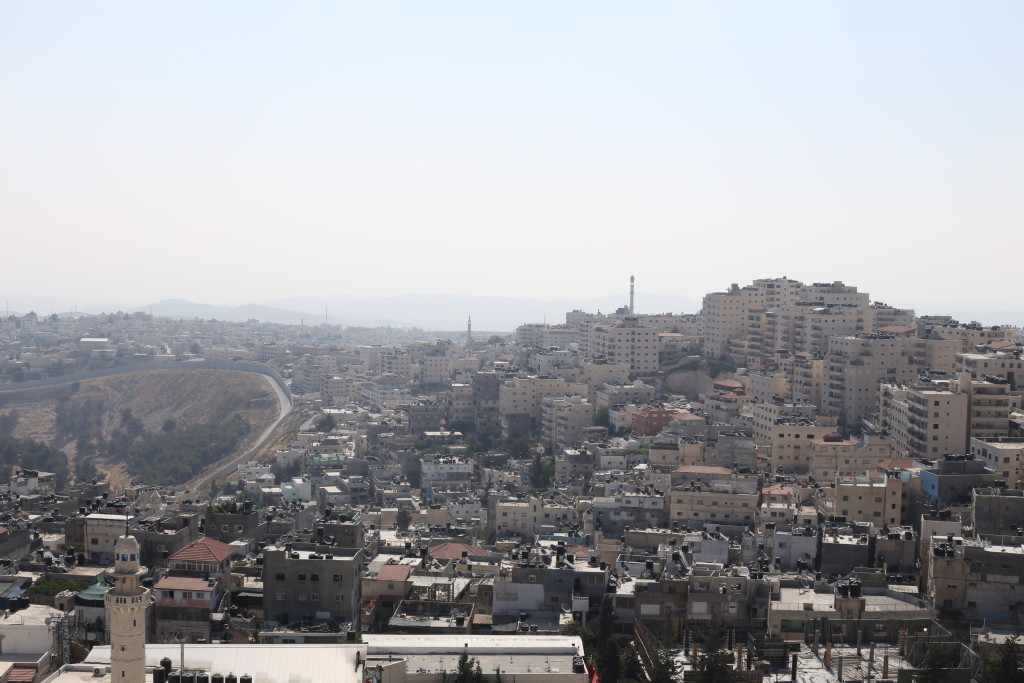Shu’fat refugee camp was established in 1965 and inhabited by 20.000 Palestinians refugees that were first expelled from 55 villages in Jerusalem, Lydd, Jaffa and Ramleh areas. Shu’fat camp has been enclosed by walls and fences built by the Israeli government since 2002, trapped in a legal void neither inside nor outside Jerusalem borders. The inhabitants of Shu’fat are threatened to be deprived of their Jerusalem residency documents and therefore forced once again to leave their homes.
Is architectural intervention at all possible in such a distorted and unstable political environment? How can it avoid the normalisation of the camp which undermines the right of return of Palestinian refugees? How could architecture exist in the here and now of the camp, yet remain in constant tension with a place of origin?
Within this context in June 2011, the UNRWA Infrastructure and Camp Improvement Program directed by Sandi Hilal, decided to intervene in the conception and realization of a girl’s school in Shu’fat refugee camp. For the first time a site specific and ad hoc design, not a pre-conceived and fixed architectural scheme, was produced.
For this project DAAR was comprised of Alessandro Petti, Sandi Hilal and Livia Minoja, in collaboration with the engineering department of UNRWA and the participation of students, teachers and organizations from the refugee camps that imagined a ‘school in exile’ as an occasion to elaborate a fragment of a different approach to education and society.



